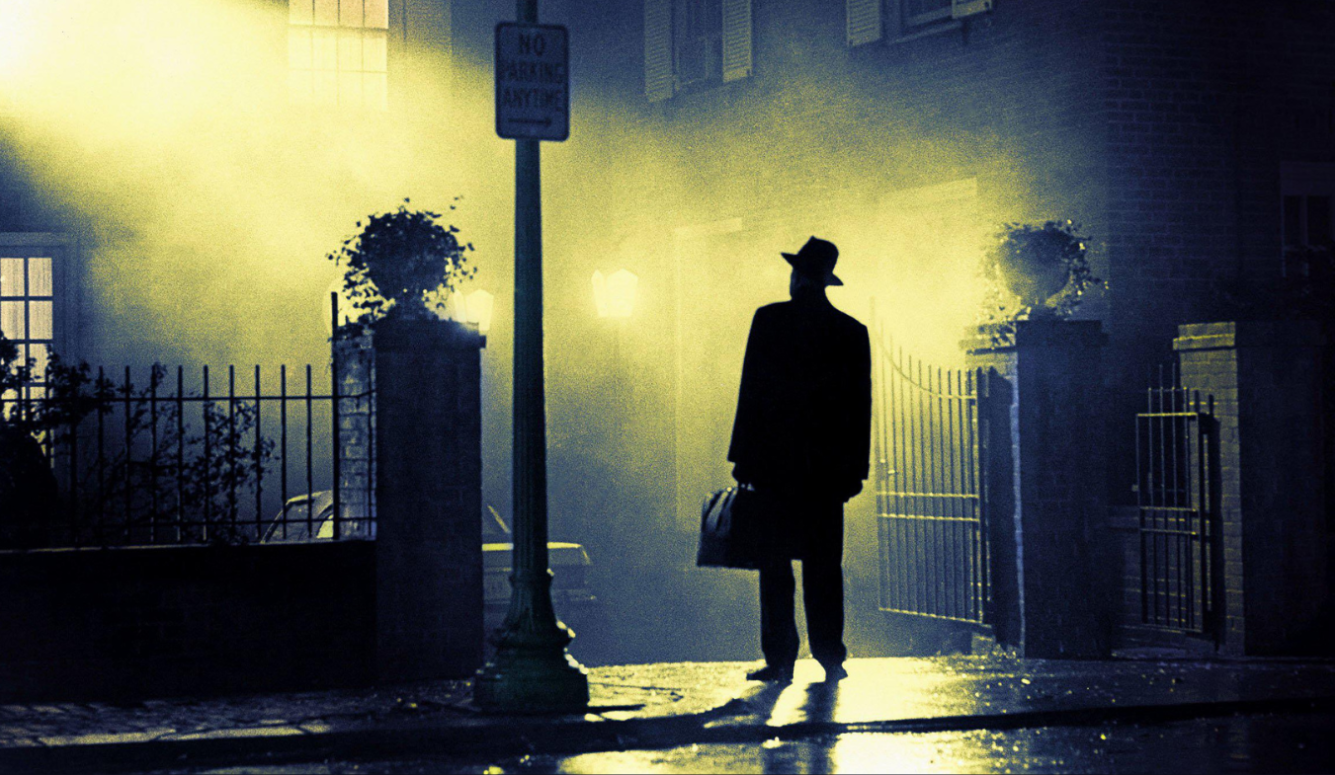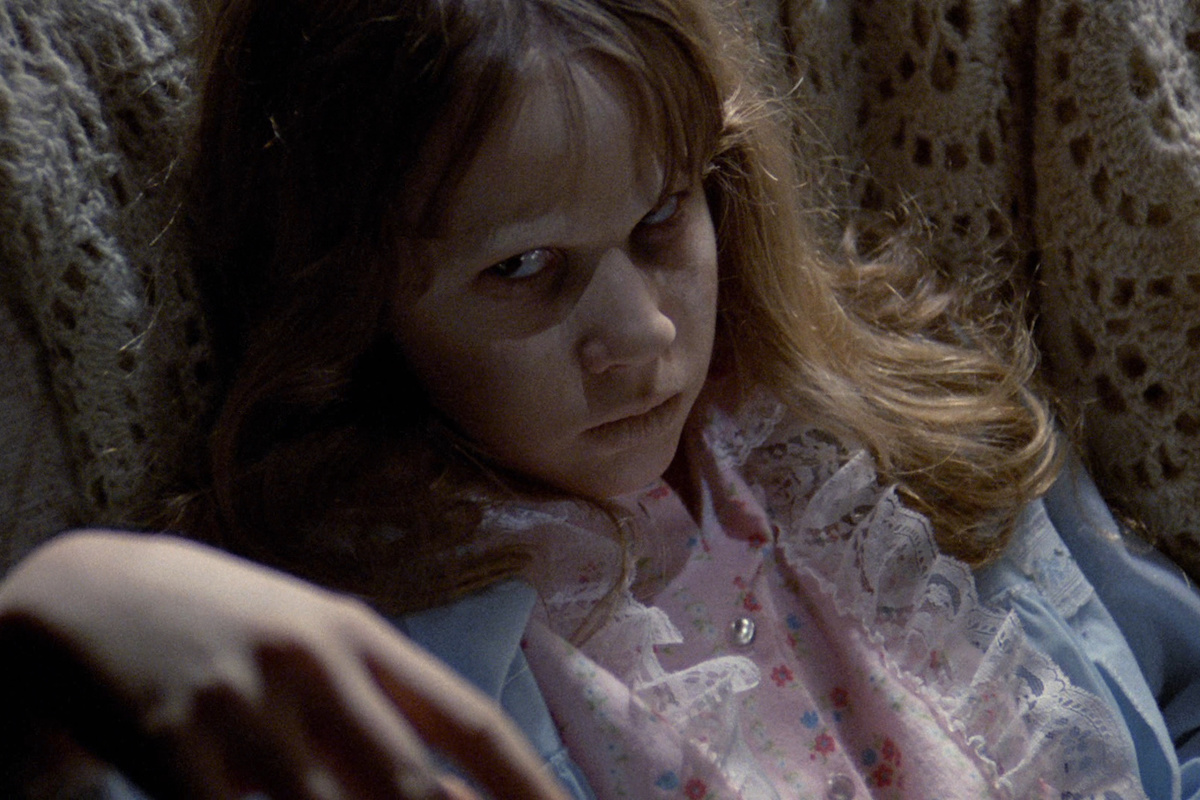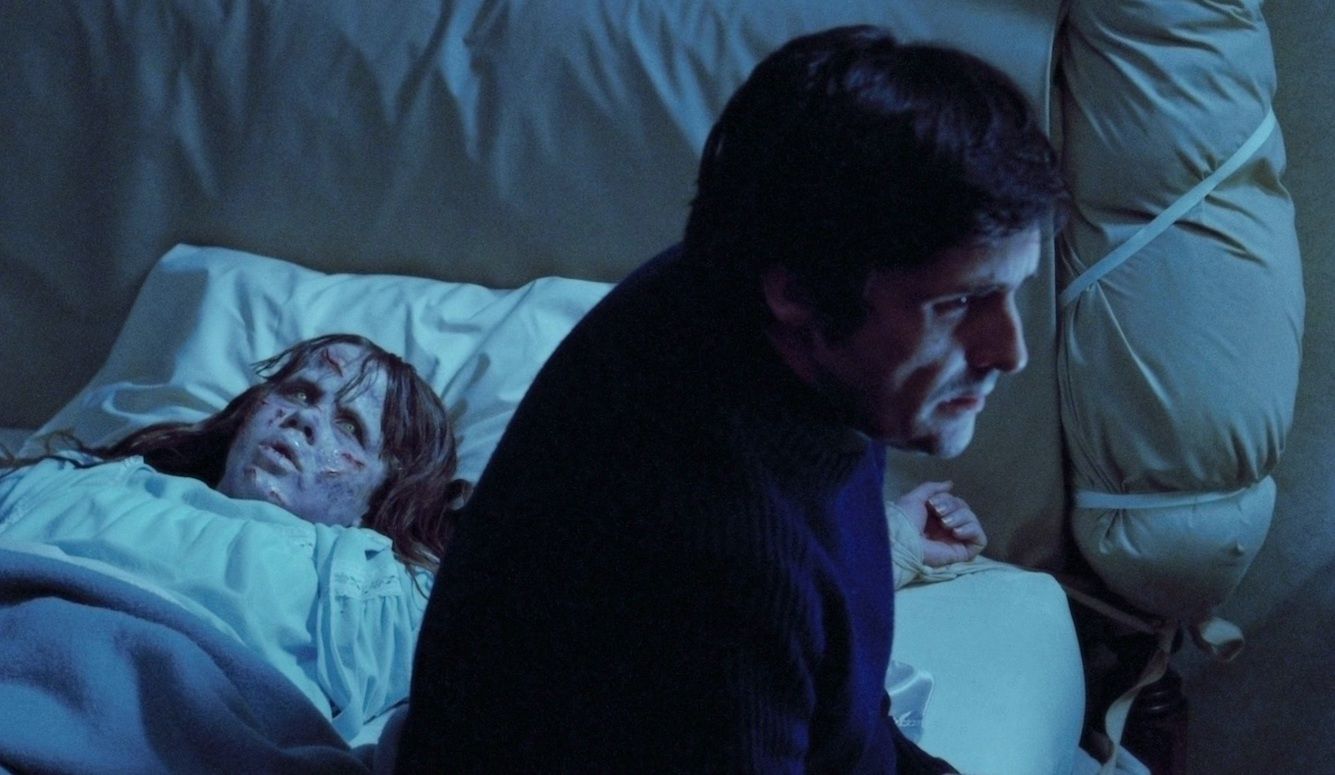Art and Culture
To Save Us All From Satan’s Power
William Friedkin’s horror classic is 50 years old.

Today marks exactly five decades since the film version of The Exorcist debuted in theatres. There’s already been a rush of commemorative books, magazines, and other reflections on the enduring impact of the landmark horror story. Adjusted for inflation, William Friedkin’s 1973 adaptation of William Peter Blatty’s bestselling 1971 novel remains one of the highest-grossing in cinema history, and has generated its own franchise of sequels, prequels, reboots, and ripoffs (The Exorcist: Believer was released earlier this year, to generally tepid reviews). The deaths of director Friedkin this year and author Blatty in 2017 also prompted extensive analyses of their masterpiece’s enduring influence. But as we celebrate an ancient religious holiday, what better time to reconsider The Exorcist’s lasting impact on culture, politics, and faith?
Despite the shocking scenes of desecration and defilement committed by the demonically possessed 12-year-old Regan MacNeil (Linda Blair in her most infamous role), many critics have judged The Exorcist to be an inherently conservative story, affirming the strength of traditional beliefs and depicting a misbehaving adolescent’s tormented journey back to decency and respectfulness. In the aftermath of the 1960s’ protest movement, and in the year that abortion was legalized in the United States, the film’s message found a responsive audience. In his 2015 history The Invisible Bridge: The Fall of Nixon and the Rise of Reagan, Rich Perlstein even suggested that The Exorcist’s huge success foreshadowed America’s eventual Republican resurgence.
Yet when it first appeared 50 years ago, The Exorcist was only one of many entertainments that seemed to defy a hitherto orderly society’s moral conventions. This was the era of the occult revival, in which systems of knowledge that had long been discredited in the rational world (astrology, Tarot cards, witchcraft), and pseudoscientific hypotheses never given credence by experts (Bigfoot, the Bermuda Triangle, the “ancient astronauts” of Chariots of the Gods?), had already become hot topics and big business. San Franciscan Anton LaVey (nee Howard Stanton Levey) had founded the Church of Satan in 1966, shortly after the cover of Time magazine asked, “Is God Dead?” The diabolic scares of Ira Levin's 1967 novel Rosemary's Baby had been turned into a popular 1968 film by Roman Polanski.

By 1971, children were already munching Count Chocula and Franken Berry cereals every Saturday morning, and teenagers were grooving to the heavy metal mayhem of Alice Cooper and Black Sabbath. The creepy criminal cases of the Zodiac killer and the Manson Family had riveted and horrified America, and in his November 1972 address, “Confronting the Devil’s Power,” Pope Paul VI maintained that the Biblical archenemy of Christianity remained a real threat.
In this context, The Exorcist seemed to represent not a conservative backlash but just the latest, and darkest, affront to conservatism itself. “The film contains brutal shocks, almost indescribable obscenities,” wrote film critic Roger Ebert upon the film’s release. “I am not sure exactly what reasons people will have for seeing this movie; surely enjoyment won’t be one of them, because what we get here aren’t the delicious chills of a Vincent Price thriller, but raw and painful experience. Are people so numb they need movies of this intensity in order to feel anything at all?”
Apparently they did. The Exorcist propelled the occult to a commercial appeal that has never diminished: subsequent blockbusters included The Omen (1976) and The Amityville Horror (1979), while horror writers Anne Rice and Stephen King began their stratospheric ascents to the top of the publishing industry in the wake of Blatty’s book and Friedkin’s picture. Ouija boards became ordinary household recreations (in the novel and film, Regan’s possession is prefigured by her playing with one). Music, television, and other media made previously unutterable presentations of blasphemy, devil-worship, and the paranormal familiar motifs of mainstream discourse. By the 1980s, a moral panic had gripped the more credulous end of the market, during which rebellious youth and hapless day-care staff were accused—and in a few instances criminally convicted—of belonging to underground networks of Satanic killers and pedophiles. The alleged and real victims of that scare were collateral damage of The Exorcist's unprecedented popularity.

A key to this popularity was the film’s matter-of-fact portrayal of what was essentially a medieval superstition. “Well, it just doesn't happen anymore, Mrs. MacNeil,” cautions Father Karras (Jason Miller) when Regan’s distraught mother (Ellen Burstyn) asks him to investigate her daughter’s possession. “Since we learned about mental illness, paranoia, schizophrenia...” Publicity handouts in 1973 emphasized The Exorcist’s alleged basis in an authentic case of exorcism that occurred in 1949. This promotional material didn’t mention that the fictional narrative grossly (in every sense) exaggerated the original episode; the subject of that case was recently revealed to be 14-year-old Ronald Hunkeler of Washington DC, who grew up to become a NASA scientist and died in 2020. Hunkeler never spoke openly about what happened to him, and later research found that his family were predisposed to a spiritual explanation for his strange behavior. Some eyewitnesses said the boy himself may have acted out the whole thing.

Nevertheless, the premise of The Exorcist was effective upon its debut because of the directness with which Blatty and Friedkin confronted its very implausibility in a materialist, post-Freud reality. The movie was not set in a Transylvanian castle but in a contemporary American home, among educated, secular cosmopolitans. And when Regan intoned, “You’re gonna die up there” to an astronaut guest at her mother’s dinner party, her ominous words symbolized the clash of reason and revelation then shaking the wider culture.
Another crucial point in the drama—one that clinches the suspension of disbelief and remains one of the most haunting in all of cinema—comes when the demonic presence inside Regan is heard via the modern technology of a tape recorder, revealing its identity when Father Karras runs the reel backward: Nowonmai... I am no one. To those for whom science and enlightenment had by then brought very mixed benefits, the idea of deeper, more unsettling truths lurking beyond the bounds of everyday experience was enormously intriguing. The possessed girl poses little physical danger—it’s the metaphysical implications of her condition that has made The Exorcist so chilling and influential in its day and our own. Call it the Regan Revolution.
By now, the themes of unholy forces and sinister secrets are commonly raised not just in pop fantasies but in ostensibly serious political debate. Indeed, the religious resonance of The Exorcist has transcended its roots in Catholic theology, just as the foreboding of its prologue at an archeological dig in Ba’athist Iraq still transcends five decades of geopolitical turmoil. If conservatives find comfort in its devoted mothers and heroic priests, progressives should be glad that it permanently altered standards of public taste and artistic license.
Like the urban legends about rock groups’ use of “back masking” to impart coded Satanic incantations on their records, conspiracy theories of Satanic sex cults among the elite descend in part from The Exorcist: the sense that hidden sects of predators are real and active; the sense that children are their ultimate victims; the sense that ordinary social structures are but a thin veneer over unspeakable malevolence; the sense, above all, that clues to this clandestine evil might be found in the plot-lines of popular books and movies.
It’s an unlikely time of year to ponder the nefarious reverberations from such a notorious cultural artifact. But then The Exorcist is an unlikely tale, first screened on December 26th, 1973, that through sheer visceral power has become one of the foundational documents of our fearful modern age. Samtsirhc Yrrem.






